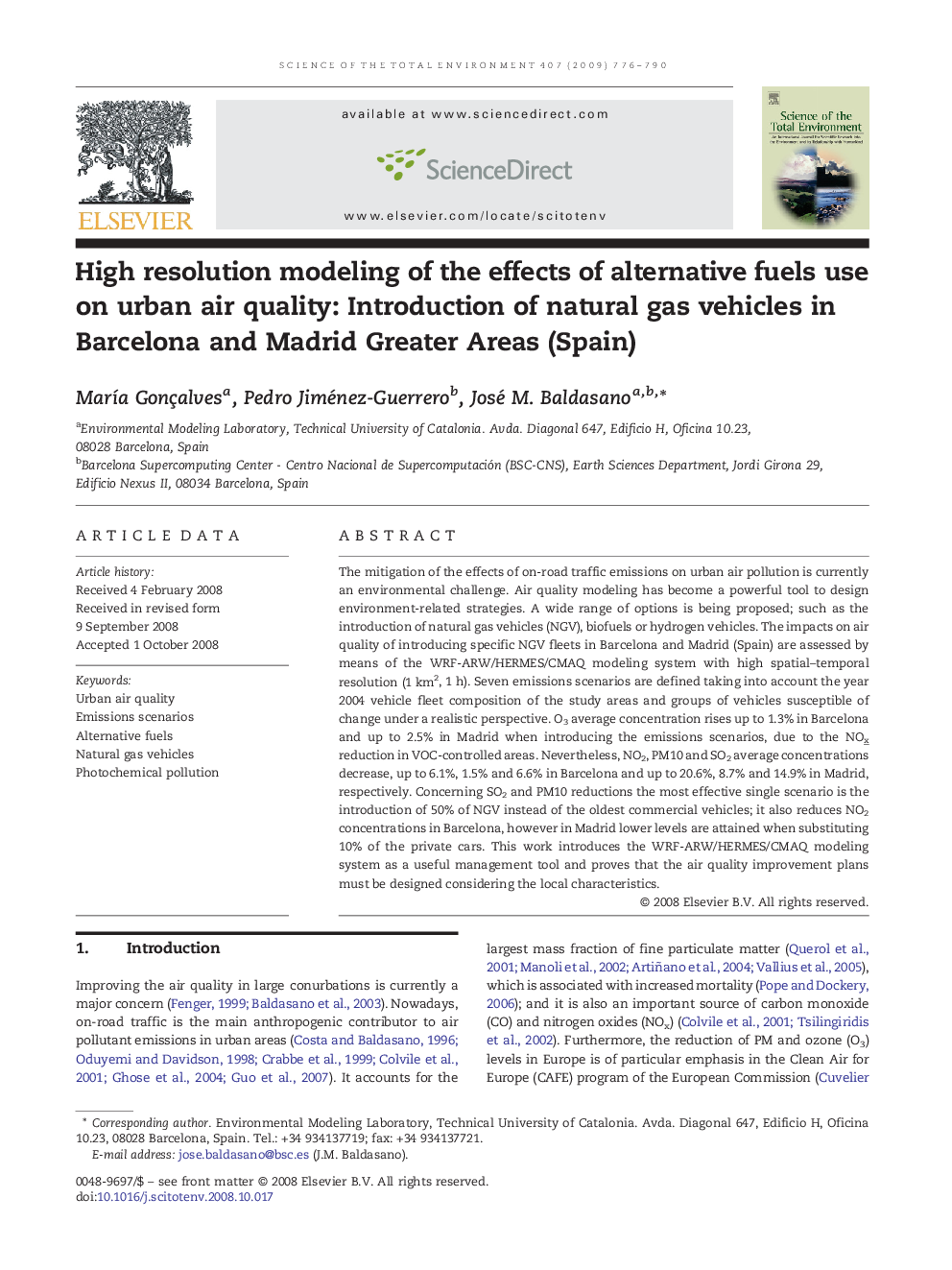| Article ID | Journal | Published Year | Pages | File Type |
|---|---|---|---|---|
| 4431890 | Science of The Total Environment | 2009 | 15 Pages |
The mitigation of the effects of on-road traffic emissions on urban air pollution is currently an environmental challenge. Air quality modeling has become a powerful tool to design environment-related strategies. A wide range of options is being proposed; such as the introduction of natural gas vehicles (NGV), biofuels or hydrogen vehicles. The impacts on air quality of introducing specific NGV fleets in Barcelona and Madrid (Spain) are assessed by means of the WRF-ARW/HERMES/CMAQ modeling system with high spatial–temporal resolution (1 km2, 1 h). Seven emissions scenarios are defined taking into account the year 2004 vehicle fleet composition of the study areas and groups of vehicles susceptible of change under a realistic perspective. O3 average concentration rises up to 1.3% in Barcelona and up to 2.5% in Madrid when introducing the emissions scenarios, due to the NOx reduction in VOC-controlled areas. Nevertheless, NO2, PM10 and SO2 average concentrations decrease, up to 6.1%, 1.5% and 6.6% in Barcelona and up to 20.6%, 8.7% and 14.9% in Madrid, respectively. Concerning SO2 and PM10 reductions the most effective single scenario is the introduction of 50% of NGV instead of the oldest commercial vehicles; it also reduces NO2 concentrations in Barcelona, however in Madrid lower levels are attained when substituting 10% of the private cars. This work introduces the WRF-ARW/HERMES/CMAQ modeling system as a useful management tool and proves that the air quality improvement plans must be designed considering the local characteristics.
